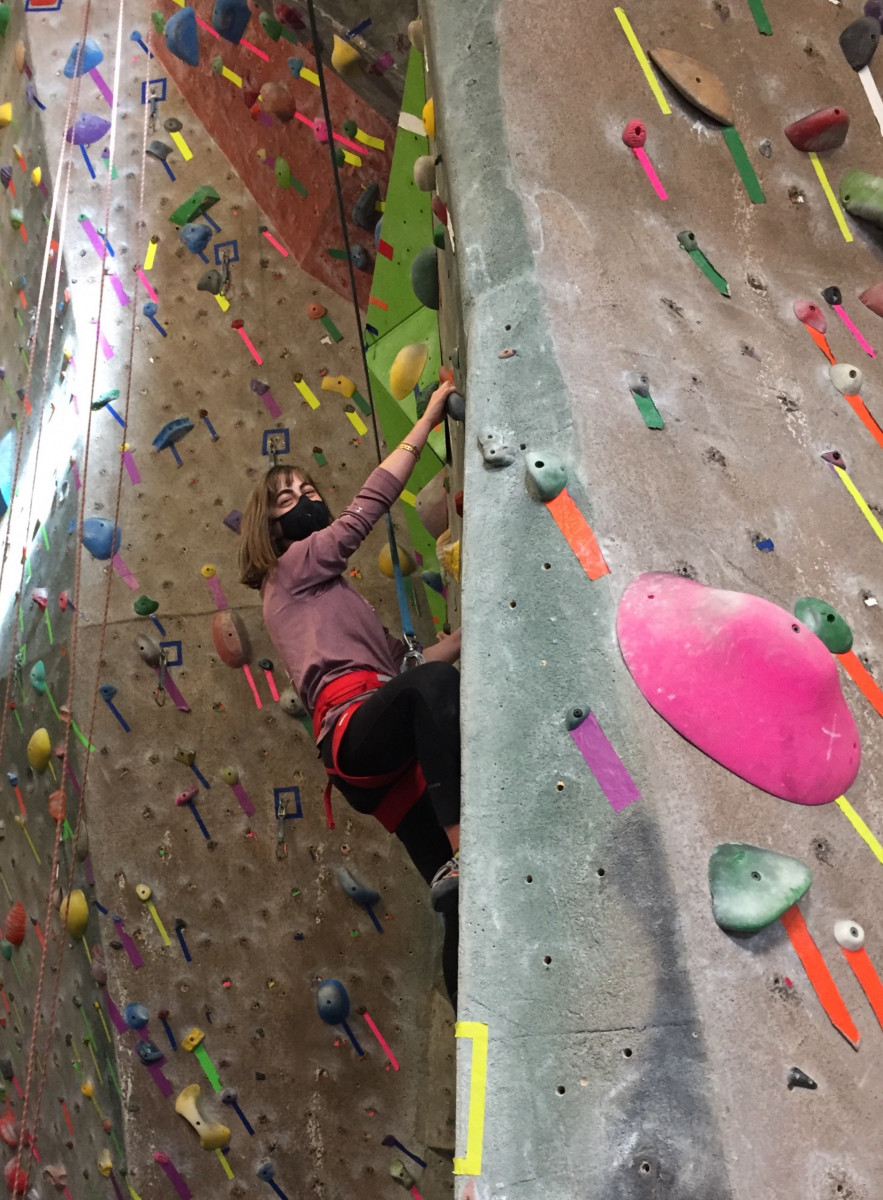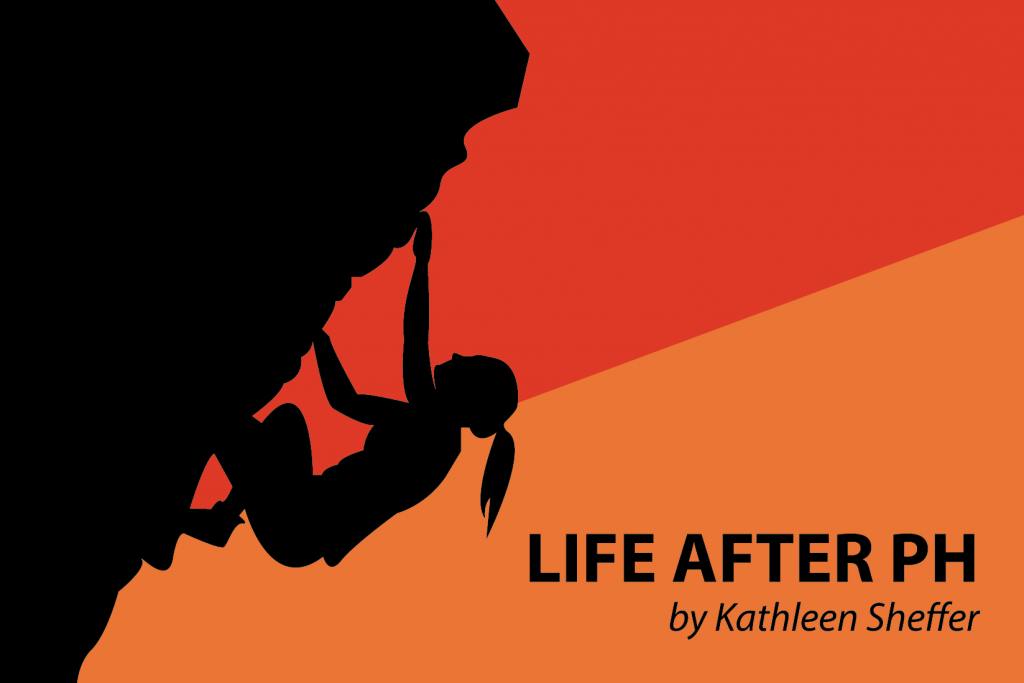Rock Climbing and My Second Chance at Childhood

(Photo courtesy of Kathleen Sheffer)
My transplant team told me to avoid any upper body exercises for the first 12 weeks. I waited a full three months and one day, and then I went rock climbing. My arms hurt for days, but I was hooked.
Rock climbing is like a puzzle, and puzzles are my thing: What better way to spend weeks with pneumonia than assembling jigsaw puzzles? I have to decide where to place my feet, which handholds to grab, and then what comes next. Sometimes, I make too many wrong moves and I have to start over. I keep trying until all the pieces come together. I found rock climbing to be a far more motivating and fun way to build upper body strength than lifting weights. As I get stronger and savvier, I’m able to complete harder routes ranked by letters and numbers.
Throughout childhood, blood thinners and tubes kept me fragile. When I started to climb a tree in the park, my dad would tell me to get down immediately. I had to wear a helmet while ice-skating and had to stop swimming in first grade. I haven’t taken a physical education class since sixth grade.
After my heart-lung transplant at 23, I had to learn how to exercise. My younger sister insisted I could push myself past the point where I started feeling short of breath. With pulmonary hypertension, my exhaustion cumulated with exertion. “Catching my breath” with PH was more like waiting until the burning pain in my chest stung a little bit less. The restoration I can achieve now is so different from anything I experienced before.
A few weeks after I started climbing, my doctors asked that I stop and save upper body training for a year after surgery. Compliant in every other category, I couldn’t give climbing up. It felt good to stretch and open up my chest, constricted from months of pain and caution. Rock climbing was a new way to socialize with my friends, a luxury after a lifetime of sitting on the sidelines while my peers participated in sports. Having faced death so recently, I didn’t want to wait another nine months to start living the life I wanted.
Starting out, I was careful not to climb routes that I might fall from. I focused on top roping, a climbing style where I’m securely attached to a rope that passes through an anchor at the top of the wall and down to a belayer below. My belayers included seasoned pros and ICU nurses. I always wear a mask and keep my bag stocked with bandages and antibiotic ointment. Climbing was a calculated risk.
With more experience and a healed incision, I got up the nerve to go bouldering outdoors. Terrified that I might fall, I didn’t want to try any of the harder moves. The following week, I went to the bouldering gym to practice falling. Previously, I focused on climbing down from each route, sure to save enough energy for after I made it to the top.
My roommate gave me tips, watching me fail again and again, overthinking what should come naturally. An essential part of bouldering is that it’s important to fall correctly to avoid injury. I just can’t seem to do it right. My head whips forward, and my extremities — not my butt — bear the brunt of the impact. Finally, I fell and hurt my wrist and ankle so badly I couldn’t get up for a few minutes. Practice over. Down-climbing it is.
It turns out that I missed a few things while growing up with pulmonary hypertension. I couldn’t take the same risks my peers took. Though I learned that my disease would knock me down again and again and that I would keep getting back up, I missed out on some lessons in physical resilience.
While taking new precautions for my suppressed immune system, I’m adjusting to life without some of the precautions I had before. More difficult than learning what new things I can do (like swimming, running, and jumping off walls) is learning how to do them. There may be some uncoordinated falls along the way, but this is a problem I’m grateful to have, and a puzzle I’ll enjoy solving.
***
Note: Pulmonary Hypertension News is strictly a news and information website about the disease. It does not provide medical advice, diagnosis, or treatment. This content is not intended to be a substitute for professional medical advice, diagnosis, or treatment. Always seek the advice of your physician or other qualified health provider with any questions you may have regarding a medical condition. Never disregard professional medical advice or delay in seeking it because of something you have read on this website. The opinions expressed in this column are not those of Pulmonary Hypertension News or its parent company, Bionews Services, and are intended to spark discussion about issues pertaining to pulmonary hypertension.









Leave a comment
Fill in the required fields to post. Your email address will not be published.